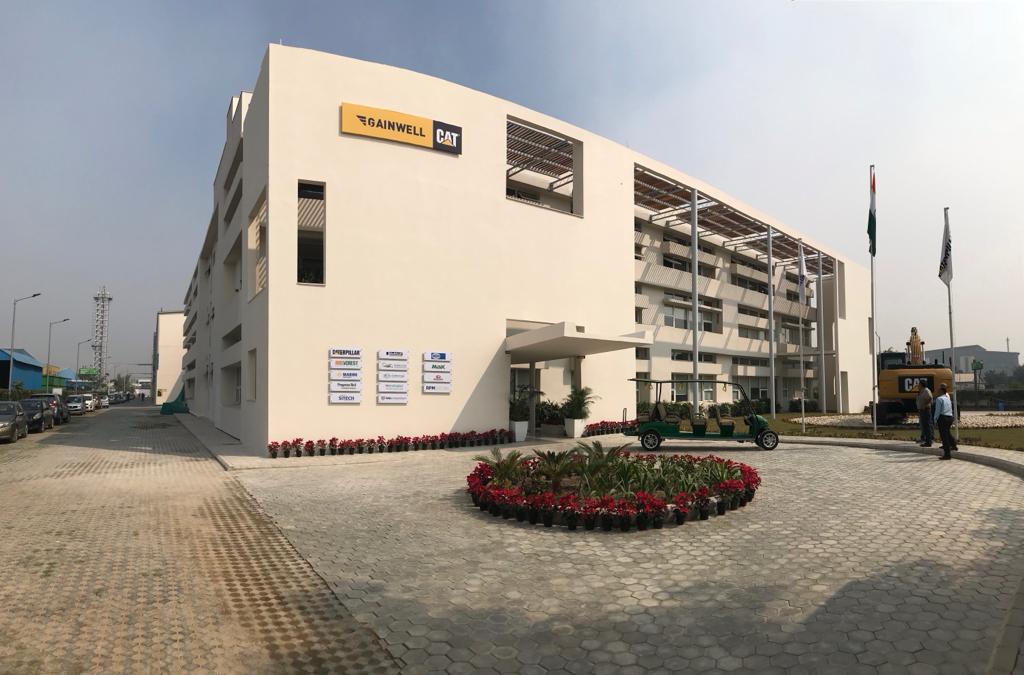UNNATI is a 3-storey, 4,945 sq.m (53,208 sft) office building for the heavy machineries and construction equipment company – GAINWELL CAT, located in its industrial campus in Greater Noida. With an EPI of 60 kWh/sq m/year, the building design is an example of how climate responsive architecture is integral to achieving energy efficiency in a composite climate.
The webinar brought on board the project manager, architect and sustainability consultants to share insights about the integrated design approach and challenges behind the project
The clients had the vision of developing a world-class, ecologically responsible facility for their employees. The intent was to create a happy workplace, minimize pollution, provide a connection with the natural environment, create a culture with shared ecological ethos.
Architect Ashok B Lall brought his decades-long experience in low-energy sustainable architecture to the table while MEP Consultant Vevaik Mahajan brought in his expertise in low-energy cooling. The resulting design exemplifies an integrated design approach- seamlessly unifying the structural design, the architectural design and the services to create a high-performance building.
The key factor to the project’s energy efficiency is its building envelope which consists of insulated walls and glazing, as well as a green roof and innovative shading strategies. This façade consists of ‘boxes’ protruding outward from lower and upper levels of the fenestration on each storey- that are insulated, cleverly designed to serve as shading devices on the exterior and light shelves to enhance daylighting on the interior. Below the fenestration, the ‘boxes’ house the HVAC ducts. The architects experimented with a unique type of sandwich construction for the façade- consisting of XPS, reinforcement and sprayed concrete.
Let’s now discuss the project’s unique cooling system. Along with the standard chilled water system, the building uses a radiant cooling system, improving the chiller efficiency by 50%. Displacement ventilation ensures a more efficient supply of clean, fresh air directly to occupants.
The project also houses a 100 KW rooftop solar plant over the adjoining workshop building making this a nearly zero building. Grey water and industrial effluent are treated on-site, and reused in the cooling towers, toilets, and for irrigation. The facility also manages organic, inorganic and toxic waste responsibly.
The clients decided to go for green building certification post-construction. Given its thoughtful design, the project could easily comply to LEED v4 BD+C’s stringent requirements and went on to achieve the Platinum certification- a first in India! Thus, the key takeaway from the project is that high performance design need not be complex!
This webinar was conducted on 17th May, 2019



